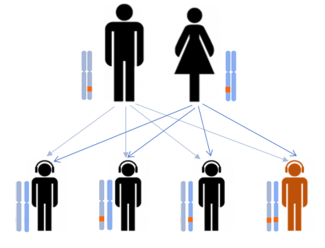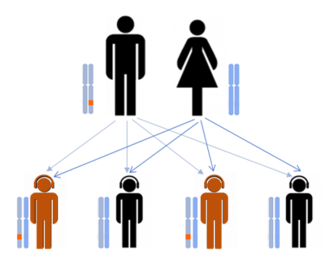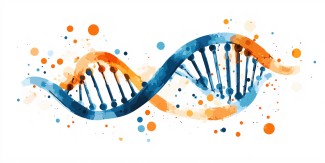Mode of genetic inheritance
Each of our cells contains 23 pairs of chromosomes, 22 pairs of autosomes and one pair of sex chromosomes (X or Y). In each pair there is a chromosome of paternal origin and a chromosome of maternal origin, so each gene exists in 2 copies.
There are 2 types of autosomal transmissions:
- Autosomal recessive transmission
- Autosomal dominant transmission
Autosomal recessive transmission
In the case of autosomal recessive disease, the person must inherit two mutated copies of the same gene to develop the disease, one copy transmitted by the mother, one copy by the father. A person who inherits only one copy is not sick but will be able to transmit the disease to his children, he is a healthy carrier.

Autosomal dominant transmission
In autosomal dominant disease, the person inherits a normal copy of the gene from one parent, and a mutated copy of the same gene from the other parent. The mutated copy of the gene is dominant over the other: it is the one that expresses itself. This means that any carrier of the mutated gene is affected by the disease, even if the second copy of the gene is healthy. Any individual with a mutated allele has a 50% chance of passing it on to their children.

- Deoxyribonucleic acid (DNA) :
- Deoxyribonucleic acid (DNA) contains all the genetic information, known as the genome, that enables living organisms to develop, function and reproduce.
- RiboNucleic Acid (RNA) :
- A copy of DNA called a transcript, RNA enables the transport of genetic information and the process of protein synthesis.

